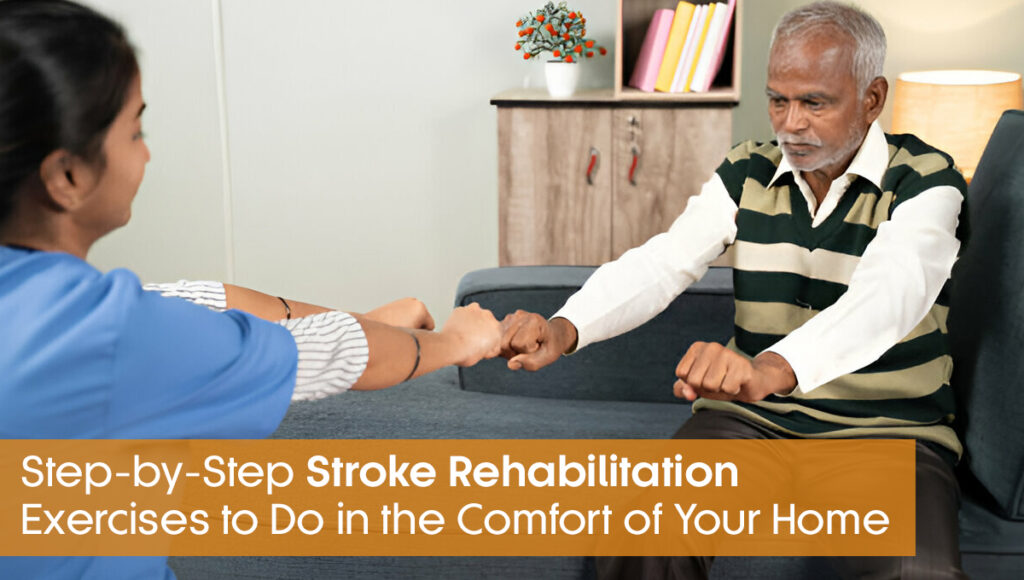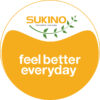Recovering from a stroke can be a challenging journey, but with the right guidance and dedication, it is possible to regain strength, mobility, and independence. Incorporating Stroke Rehabilitation Exercises into your daily routine can play a significant role in speeding up recovery while improving overall well-being. Sukino Healthcare emphasizes the importance of structured rehabilitation programs and provides expert assistance for those on the road to recovery. In this article, we will explore step-by-step stroke rehabilitation exercises you can perform safely and effectively at home.
Understanding the Importance of Stroke Rehabilitation
Rehabilitation after a stroke is crucial for restoring motor functions, improving coordination, and reducing the risk of future strokes. Home-based exercises offer convenience and comfort while empowering patients to actively participate in their recovery. These exercises target specific areas such as balance, strength, flexibility, and fine motor skills, helping to rebuild neural pathways and enhance daily functioning.
Step-by-Step Stroke Rehabilitation Exercises
1. Range of Motion Exercises
Restoring mobility in the affected limbs is often a priority during stroke recovery.
- How to Perform:
- Sit in a comfortable chair or lie on a bed.
- Slowly move your arms and legs in circular motions, or stretch them out and back in controlled movements.
- Benefits:
These exercises prevent stiffness, improve circulation, and maintain joint flexibility. - Frequency: Perform 10 repetitions for each limb, twice daily.
2. Strength Training with Resistance Bands
Building strength is essential for regaining independence. Resistance bands provide safe and gradual progress for stroke survivors.
- How to Perform:
- Hold the resistance band with both hands and gently pull it apart.
- You can also place the band around your legs and push against it.
- Benefits:
This enhances muscle strength, particularly in weakened areas, while improving overall endurance. - Frequency: Aim for 2 sets of 10 repetitions, once a day.
3. Balance Training
Balancing exercises are critical for preventing falls and improving posture.
- How to Perform:
- Stand next to a sturdy surface, such as a wall or table, for support.
- Practice standing on one foot for 10-15 seconds, alternating between legs.
- Benefits:
These exercises strengthen core muscles, improve coordination, and boost confidence. - Frequency: Repeat 5-10 times per session, twice daily.
4. Fine Motor Skill Practice
Regaining control over fine motor skills is vital for performing daily activities like buttoning a shirt or writing.
- How to Perform:
- Use a stress ball to practice squeezing and releasing.
- Try picking up small objects like coins or beads and placing them in a container.
- Benefits:
These activities improve hand-eye coordination and dexterity. - Frequency: Dedicate 10-15 minutes daily to fine motor exercises.
5. Walking or Assisted Gait Training
Walking, even short distances, helps rebuild strength and improves cardiovascular health.
- How to Perform:
- Start with short walks around your home or garden.
- Use a walker or cane for added stability if needed.
- Benefits:
This promotes better circulation, reduces stiffness, and enhances mobility. - Frequency: Aim for 5-10 minutes of walking, increasing gradually as strength improves.
6. Cognitive Rehabilitation Exercises
Stroke recovery isn’t just physical; cognitive exercises are equally important.
- How to Perform:
- Solve puzzles, crosswords, or Sudoku to challenge your brain.
- Practice memory games like recalling daily tasks or identifying objects in a room.
- Benefits:
These activities enhance memory, problem-solving, and overall mental agility. - Frequency: Spend 15-20 minutes daily on cognitive exercises.
Tips for Safe and Effective Rehabilitation at Home
- Consult a Healthcare Professional: Before starting any exercise routine, consult with a physiotherapist or healthcare provider.
- Maintain Consistency: Regular practice is key to seeing improvements.
- Track Progress: Keep a journal to monitor your recovery and celebrate milestones.
- Listen to Your Body: Avoid overexertion and stop any exercise if you experience pain or discomfort.
- Seek Support: Involve family members or caregivers for encouragement and assistance when needed.
Why Choose Sukino Healthcare for Stroke Rehabilitation?
Sukino Healthcare offers tailored rehabilitation programs that address the unique needs of stroke survivors. Our team of experts provides comprehensive support, including physiotherapy, occupational therapy, and emotional care. With a focus on the continuum of care, Sukino ensures a smooth transition from hospital to home, empowering patients to achieve optimal recovery.
Conclusion
Incorporating Stroke Rehabilitation Exercises into your daily routine can significantly improve recovery outcomes, allowing you to regain strength, mobility, and independence. While performing these exercises at home provides flexibility and comfort, expert guidance from professionals like Sukino Healthcare can maximize the effectiveness of your efforts. Begin your journey to recovery today and take the first step toward a healthier and more independent life.
If you’re in the healthcare industry managing a large workforce, ensuring smooth employee transitions is just as important as patient care. It helps streamline onboarding and offboarding, making workforce management seamless and efficient. Begin your journey today and take the first step toward a healthier and more independent life.
We are India’s first comprehensive continuum care provider. We provide multidisciplinary out of hospital care to acute and post-acute and chronically ill patients at our critical care facilities and your home.


